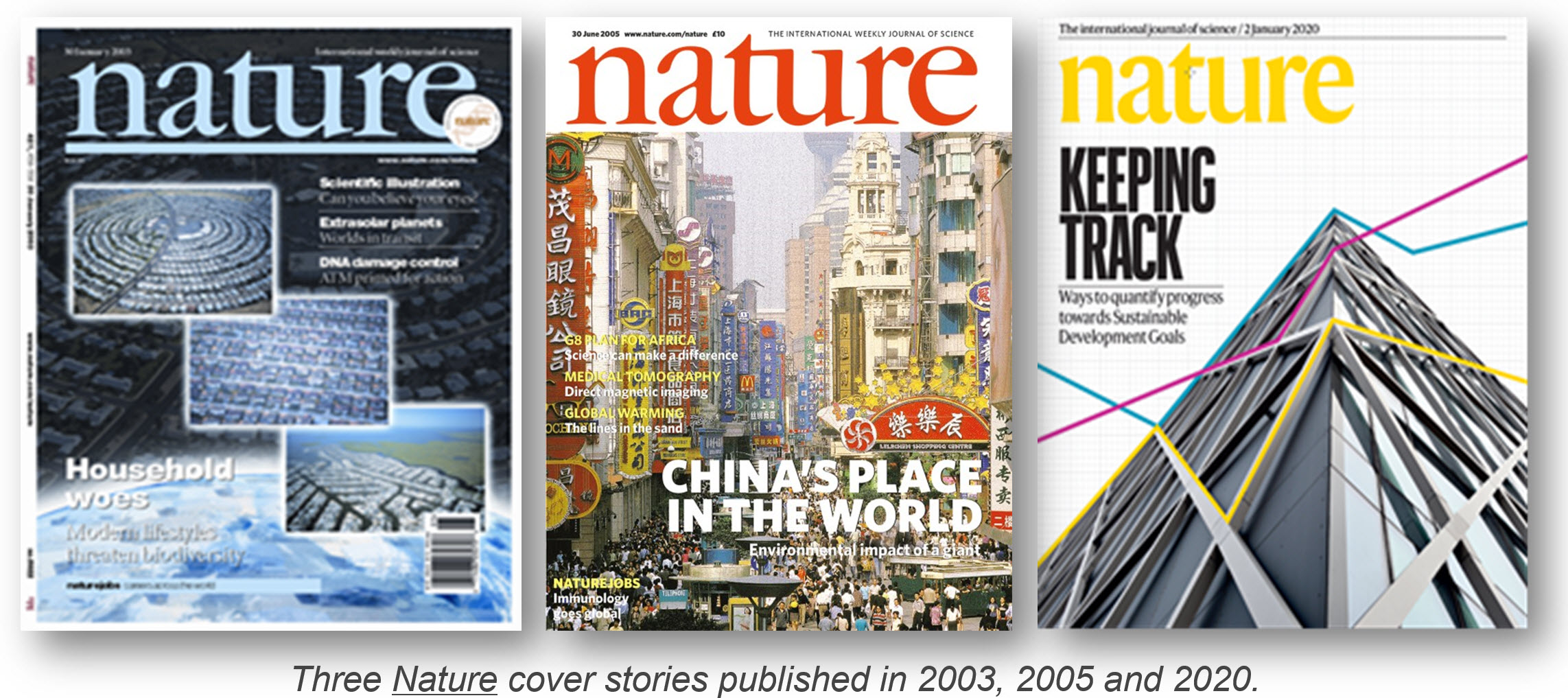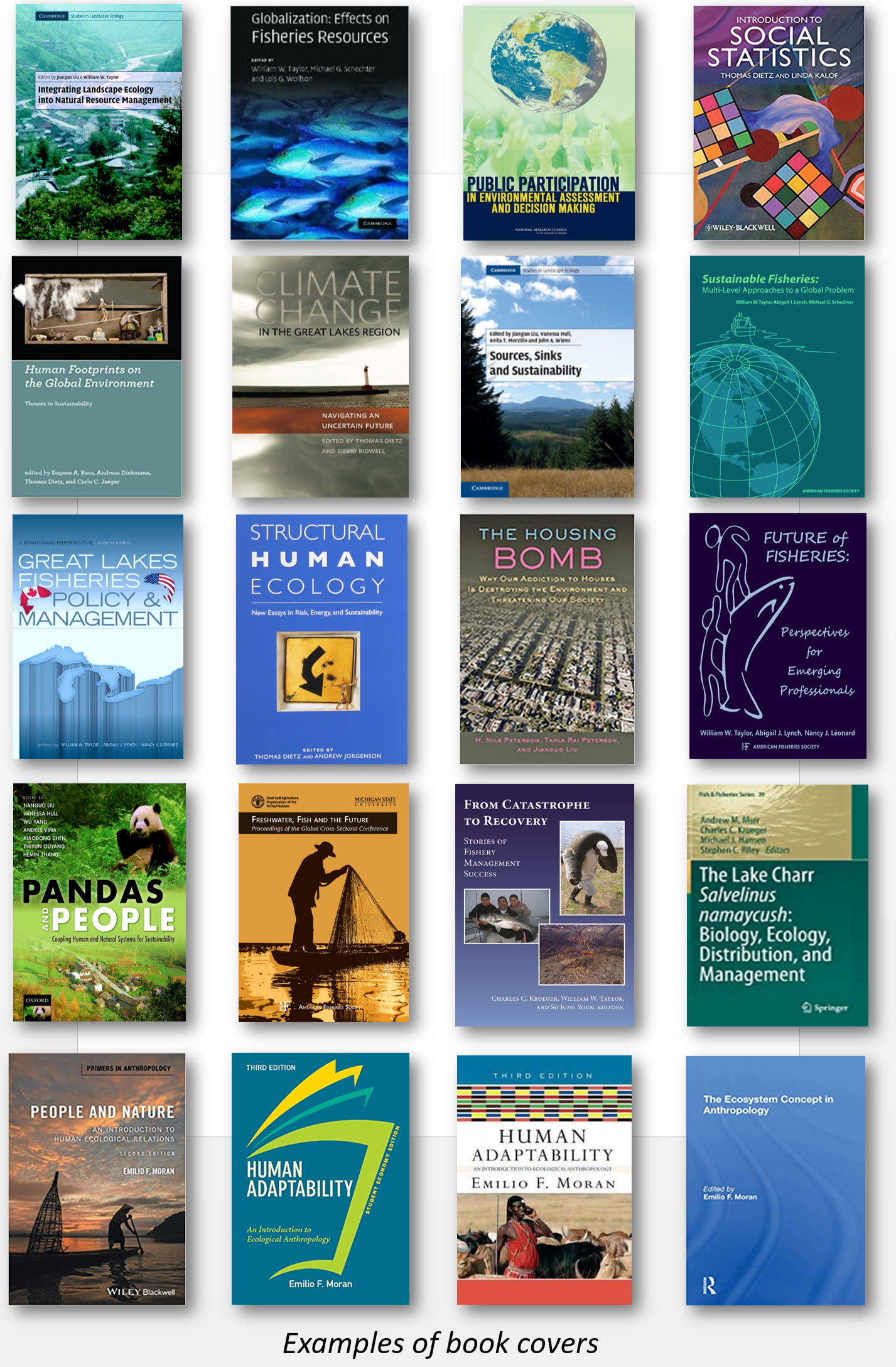Publications
Journal Articles
A list of journal articles published by CSIS members, including 3 cover stories in Nature, 24 appearances in Science, and 17 in PNAS (Proceedings of the National Academy of Sciences of the United States of America).
Books and Book Chapters
Selected books (edited books) and book chapters published by CSIS members.
Publications
-
Spatial-temporal assessment of water footprint, water scarcity and crop water productivity in a major crop production region
Published on April 2, 2019
This study has implications for revealing potential unsustainable conditions in irrigated agriculture worldwide. -
SCIENCE OF THE TOTAL ENVIRONMENT - Interactive National Virtual Water-Energy Nexus Networks
Published on March 29, 2019
We constructed and analyzed interprovincial virtual water and energy transfer networks, using China (the largest energy consumer and is undergoing severe water scarcity) as a demonstration. -
APPLIED ENERGY - Shift in a national virtual energy network
Published on March 21, 2019
The total virtual energy transferred from energy scarce to energy-abundant provinces increased from 43.2% to 47.5% from 2007 to 2012. -
SUSTAINABILITY -- Telecoupling Research: The First Five Years
Published on February 21, 2019
A systematic review of the first five years of telecoupling research to evaluate the state of telecoupling science and identify strengths, areas to be improved, and promising avenues for future study. -
Effects of the 2011 Missouri River flood on walleye natal recruitment and habitat use in Lake Sharpe, South Dakota
Published on February 3, 2019
Our results show the resilience of the Lake Sharpe walleye population to a catastrophic flood, providing fisheries professionals with an approach for quantifying flood effects on natal recruitment and developing spatially informed management approaches. -
Threats to freshwater fisheries in the United States: perspectives and investments of state fisheries administrators and Agricultural Experiment Station directors
Published on February 3, 2019
Our purpose was to survey fisheries administrators from state fisheries agencies and Agricultural Experiment Stations (AESs) about their perceptions of, and resource investment toward, threats to freshwater fisheries in the United States. -
The changing face of Great Lakes fisheries
Published on February 3, 2019
In this paper, we discuss the environmental, cultural, and socioeconomic changes that have characterized the Great Lakes, and we share our perspectives and personal stories about the impacts of these changes. -
Evolution of multiple global virtual material flows
Published on January 1, 2019
To address this knowledge gap, we assessed the evolution and interactions of global flows of virtual water, energy, land, CO2, nitrogen as well as financial capital embodied in international trade from 1995 to 2008. -
SUSTAINABILITY -- Complex interrelationships between ecosystem services supply and tourism demand: General framework and evidence from the origin of three Asian rivers
Published on December 19, 2018
This study identifies complex interrelationships between the demand for nature-based tourism, which is a type of cultural ES, ES supply, and the economy simultaneously, using China’s Qinghai Province as a demonstration site. -
ECOLOGY AND SOCIETY - Telecoupling: A new frontier for global sustainability
Published on December 16, 2018
We synthesized the articles by describing eight overarching lessons learned. -
JCRM - Spatial distribution of cetacean strandings in the Falkland Islands to define monitoring opportunities
Published on December 1, 2018
The Falkland Islands cetacean stranding database was transformed in a geo-spatial database. -
SUSTAINABILITY -- Toward rigorous telecoupling causal attribution: a systematic review and typology
Published on November 27, 2018
Systematic review of causal attribution in the telecoupling literature (n = 89 studies) and development of a standardized causal terminology and typology for consistent use in telecoupling research. -
Emerging threats and persistent conservation challenges for freshwater biodiversity
Published on November 7, 2018
Efforts to reverse global trends in freshwater degradation now depend on bridging an immense gap between the aspirations of conservation biologists and the accelerating rate of species endangerment. -
Sustainable hydropower in the 21st century
Published on November 4, 2018
Hydropower has been the leading source of renewable energy across the world, accounting for up to 71% of this supply as of 2016 -
ECOSYSTEM SERVICES -- Global relationships between biodiversity and nature-based tourism in protected areas
Published on October 30, 2018
We present results on the interplay between biodiversity conservation and nature-based tourism, while controlling for environmental and socioeconomic factors in and surrounding terrestrial PAs worldwide. -
China's Environment on a Metacoupled Planet
Published on October 19, 2018
China has emerged as a global economic powerhouse after four decades of unprecedented growth -
ANNUAL REVIEW OF ENVIRONMENT AND RESOURCES - China’s Environment on a Metacoupled Planet
Published on October 19, 2018
We suggest systems approaches such as nexus approaches and flow-centered governance to help China achieve ecological civilization and become an environmental leader on a metacoupled planet. -
ECOLOGY AND SOCIETY - Network analysis as a tool for quantifying the dynamics of metacoupled systems: an example using global soybean trade
Published on October 14, 2018
Network analysis is a powerful and flexible tool that has been used to quantify social, economic, and ecological systems. We evaluate the utility of network analysis for quantifying metacoupled systems by assessing global soybean trade among 217 countries. -
JOURNAL OF GEOGRAPHICAL SCIENCES -- Spillover effect offsets the conservation effort in the Amazon
Published on October 4, 2018
We used the two supply-chain agreements implemented in the Amazon biome as examples and evaluated their spillover effects to the Cerrado. -
NATURE SUSTAINABILITY - Nexus approaches to global sustainable development
Published on September 14, 2018
Recent quantitative studies have revealed nexus approaches can uncover synergies and detect trade-offs among sectors. Nexus approaches have potential to reduce negative surprises and promote integrated planning, management and governance.





 Print
Print Email
Email